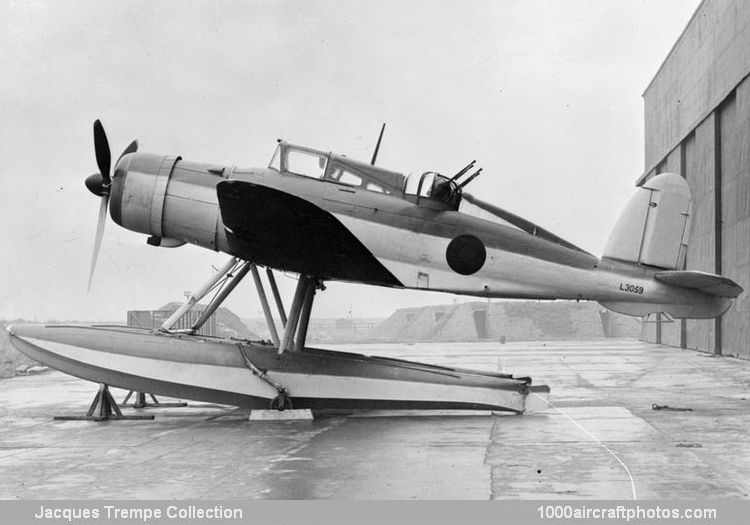11/15/2014. Remarks by Johan Visschedijk: "Unlike the Skua fighter/dive-bomber which was purely a landplane for shore or carrier operation, the Roc was intended from the outset to meet Specification 26/36 for a twin-float seaplane fighter. Two trials machines, serialed L3057 and L3059, were therefore sent to the Blackburn factory at Dumbarton, Scotland in October 1939 to be fitted with the first two seaplane conversion sets.
These were built to Specification 20/37 and consisted of Alclad covers for the wheel wells and Blackburn Shark interchangeable Alclad floats mounted on close-set N-struts amidships and single front struts with spreader bar. As on the Shark, water rudders were operated pneumatically from the aireraft's normal braking system and the tail wheels were removed and replaced by mooring rings. At this stage the original all-silver color scheme gave way to camouflaged upper surfaces with duck egg blue on the lower half of the fuselage and under the starboard mainplane, the underside of the port wing being black.
The aircraft were transferred to the MAEE at Helensburgh, only 10 mls (16 km) or so down the river Clyde from the Dumbarton factory. Tests there with L3059 during November 1939 showed marked directional instability and it crashed just after take off on December 3. Tests on the other machine, L3057, were therefore initiated in April 1940 to see if stability could be improved by means of additional fin area below the tail plane. Without the lower fin, turns at low altitude were hazardous, but after modification the aircraft was much more stable, although care was still needed if inward sideslip was to be avoided in low turns. Behavior was normal in all other respects, both in the air and on the water, and in June 1940 take off runs made from Loch Lomond and from the Clyde to compare the unstick times from fresh and salt water, showed little difference between the two.
A third Roc, serial L3060, also mounted on floats, was short-lived and ended its days as scrap at No. 49 MD, Horsham, in March 1940. Even L3057 itself, first of all the Rocs, faired little better and was relegated to the role of instructional airframe at No. 6 School of Technical Training, Hednesford, at the end of the year. A fourth seaplane conversion kit, dispatched to the Hawker factory at Kingston upon Thames, Surrey, arrived on April 26, 1940 for experimental fitment to a Hurricane for the Norwegian campaign. Flight trials scheduled for June 1940 were cancelled when British forces were withdrawn from Norway on May 28, 1940."
